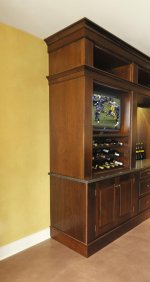ShilohWood
Member
- Joined
- Jul 5, 2014
- Messages
- 20
Hello fine, fellow Festoolians!
I'm preparing to initiate a venture to construct a set of cabinets for my bedroom and I was looking to see if I could get any advice as to the finishing process. I'm definitely wanting to achieve a VERY dark finish but I'm not sure as to the sealer that I want. Perhaps like the image attached. Thanks in advance for any help as to achieving that kind of look[emoji4]
I'm preparing to initiate a venture to construct a set of cabinets for my bedroom and I was looking to see if I could get any advice as to the finishing process. I'm definitely wanting to achieve a VERY dark finish but I'm not sure as to the sealer that I want. Perhaps like the image attached. Thanks in advance for any help as to achieving that kind of look[emoji4]


